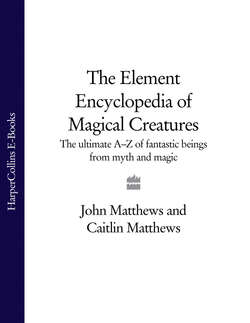Читать книгу The Element Encyclopedia of Magical Creatures: The Ultimate A–Z of Fantastic Beings from Myth and Magic - John Matthews - Страница 202
BASILISK
ОглавлениеThe original Basilisk of classical tradition was a small venomous serpent whose throat never touched the ground, with a crest upon its head that gave it its name. Basileus is the Greek for king, and this ensured that the snake was remembered as the king of all serpents. Everything about the Basilisk was poisonous. Its bite, glance, saliva and smell were all fatal. In addition, it could spit venom at flying birds. The venom of the Basilisk could rot the fruit on trees and pollute water. It was considered to be the cause of the Libyan and Middle Eastern deserts. Pliny described the Basilisk as a snake with white spots or stripes with fiery breath and a death-dealing cry, that had the ability to drive people mad with its poison. The Basilisk shares with Medusa the ability to strike onlookers dead by its glance alone. There were certain strategies that helped protect the traveller during encounters with it: you might carry a crystal globe to reflect back the petrifying stare, you could carry a weasel which can give as good as it gets by way of venomous biting, or you could take a cockerel with you, since its crowing would send the Basilisk into fits.
The magical property of the Basilisk is primarily the power to protect whatever you want kept safe from theft or attack. Many Gnostic seals of the late classical era carry the image of the basilisk in order to ward off evil, in much the same way that military breastplates carry a gorgonian (an image of the Medusa’s head). Because one of the main antidotes to the Basilisk was to carry a cockerel, the creature changed its shape in medieval legend, becoming a serpent with a cockerel’s head, neck and legs, but retaining its serpent tail. Variant forms give it a human face on a cockerel’s head and dragon’s wings. A great brass cannon was named after it in Tudor times in the hope that enemies would be stricken down as fatally as though by the venom of the beast itself. For Christians, the Basilisk was an ultimate symbol of the devil in his form as the one who tempted our first parents, Adam and Eve: beautiful in form and colour but deadly to the human race.
A serpentine Basilisk appears in J.K. Rowling’s Harry Potter and the Chamber of Secrets, where Harry finally defeats it with the sword brought to him by Fawkes, the Phoenix that lives in Professor Dumble-dore’s study. He pierces the Basilisk in the eye, depriving him of his petrifying stare.
